The Commodity Channel Index (CCI) indicator holds a pivotal role in guiding traders within the dynamic financial markets. With its inception dating back to 1980 by Donald Lambert, this oscillator stands as a beacon for measuring price levels against a designated average.
Offering insights into market momentum, trend identification, and potential reversals, the CCI paints a nuanced picture of market conditions. The application of this indicator spans far beyond mere numerical values, diving into the realm of strategic decision-making and market analysis.
Delving into the 7 best insights into the Commodity Channel Index Indicator promises a deeper understanding of its multifaceted utility in the trading landscape.
Understanding Commodity Channel Index Calculation
Understanding the Commodity Channel Index Calculation involves meticulously analyzing the relationship between the typical price, moving average, and mean deviation factor to gauge market trends and potential reversal points.
The Commodity Channel Index (CCI) is a versatile indicator used to identify overbought and oversold conditions in the market. By comparing the current price to its average over a specified period, the CCI helps traders spot potential trend reversals.
The typical price, calculated as the average of high, low, and close prices, forms the basis for determining deviations from the moving average. These deviations, divided by the mean deviation factor, yield the CCI value.
Values above +100 indicate overbought conditions, suggesting a possible downward correction, while values below -100 signal oversold conditions and a potential upward correction.
The CCI calculation's ability to reflect price dynamics relative to historical averages makes it a valuable tool for traders seeking to understand market trends and anticipate turning points.
Interpreting CCI for Trend Analysis
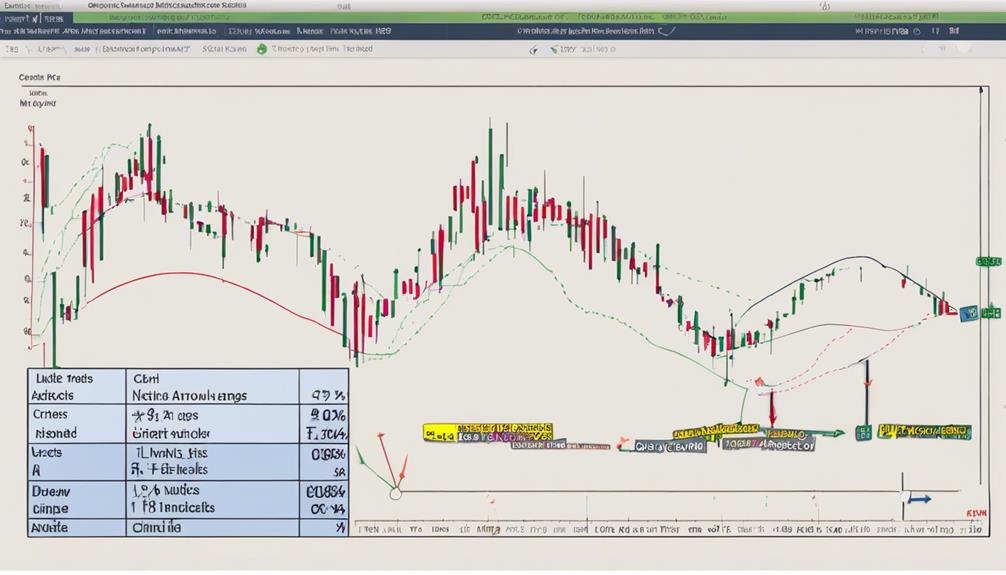
Analyzing CCI for trend identification involves looking at values above +100 for uptrends and below -100 for downtrends.
Additionally, spotting divergence between CCI and price can indicate potential trend reversals.
Adjusting CCI levels according to security volatility can enhance the accuracy of trend analysis.
Complementing CCI signals with other technical tools can lead to more informed trading decisions.
Trend Identification With CCI
How can traders effectively utilize the Commodity Channel Index (CCI) to identify trends in the market with precision and accuracy?
- CCI Values: CCI values above +100 indicate a strong uptrend, while values below -100 suggest a strong downtrend.
- Analyzing Price Levels: Identifying trend direction with CCI involves analyzing price levels relative to historical averages.
- Spotting Trend Reversals: CCI helps traders spot potential trend reversals by comparing current price levels to historical averages.
- Overbought and Oversold Conditions: Trend analysis using CCI involves looking for overbought and oversold conditions to anticipate shifts in market direction.
Understanding CCI trends is crucial for making informed decisions on entering or exiting positions, ensuring traders can navigate the market effectively.
CCI for Trend Reversal
Traders utilizing the Commodity Channel Index (CCI) for trend reversal analysis focus on interpreting CCI values above +100 and below -100 to identify potential buying or selling opportunities based on market trends. CCI above +100 signifies a strong uptrend, suggesting a potential entry point for buyers in trend reversal scenarios. Conversely, CCI below -100 indicates a strong downtrend, signaling a potential selling opportunity for traders anticipating a trend reversal.
Divergence between CCI and price action can also provide insights into potential trend reversals. Adjusting CCI levels based on security volatility is crucial for accurate trend reversal analysis. To bolster the reliability of trend reversal signals, traders often combine CCI with other technical analysis indicators to confirm entry and exit points, recognizing CCI as a momentum oscillator with valuable confirming signals.
Using CCI for Reversal Signals
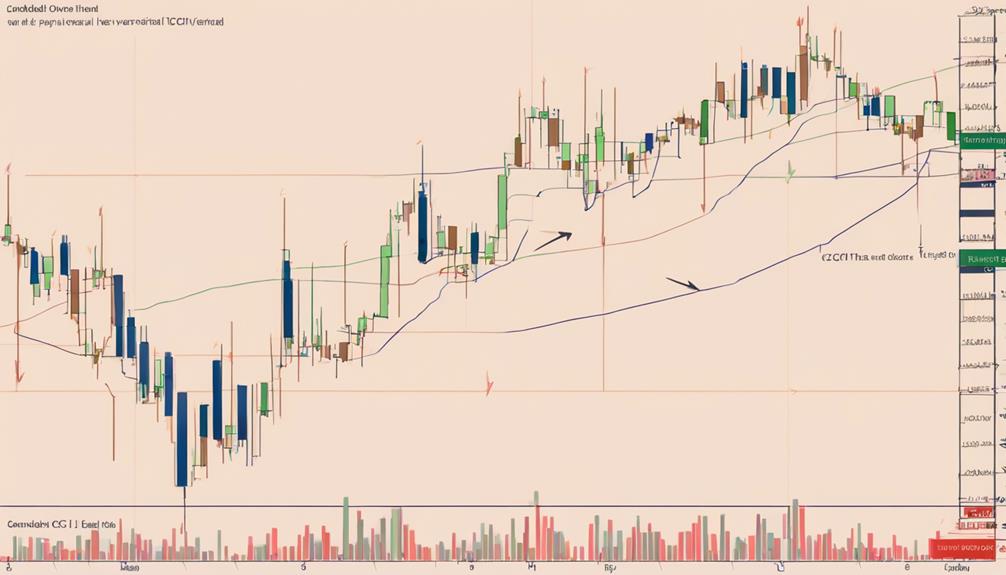
Utilizing the Commodity Channel Index (CCI) for detecting potential trend reversals involves closely monitoring its divergence from price movements. When using CCI for reversal signals, traders can enhance their analysis by considering the following:
- Identify Overbought and Oversold Levels: CCI helps traders identify overbought and oversold conditions in the market, indicating potential reversal points.
- Utilize CCI Divergence: By observing the disparity between CCI values and price movements, traders can anticipate shifts in the market sentiment and potential reversals.
- Precision in Entry and Exit Points: Successful traders use CCI divergence to pinpoint precise entry and exit points, improving the timing of their trades.
- Combine with Other Indicators: Combining CCI with other technical indicators can increase the accuracy of reversal signals, providing a more comprehensive analysis of market conditions.
Incorporating CCI in Trading Strategies

To effectively incorporate the Commodity Channel Index (CCI) in trading strategies, traders can capitalize on its proven reliability and profitability in comparison to other indicators, such as the Money Flow Index (MFI).
By utilizing CCI for generating buy and sell signals, traders can take advantage of its ability to identify overbought or oversold conditions in the market. For instance, buying when CCI crosses above -100 after dipping below and selling when it crosses back below +100 after rising above can help traders capture potential reversals.
Optimal settings like CCI-50 on daily charts and CCI-20 on 1-minute charts have shown promising outcomes in trading strategies and backtesting. Moreover, incorporating CCI values into technical analysis alongside long-term trends can enhance decision-making processes.
Utilizing software tools such as TrendSpider and TradingView for CCI analysis can further streamline trading activities, improve strategy optimization, and increase the likelihood of trading success.
Recognizing Overbought and Oversold Levels
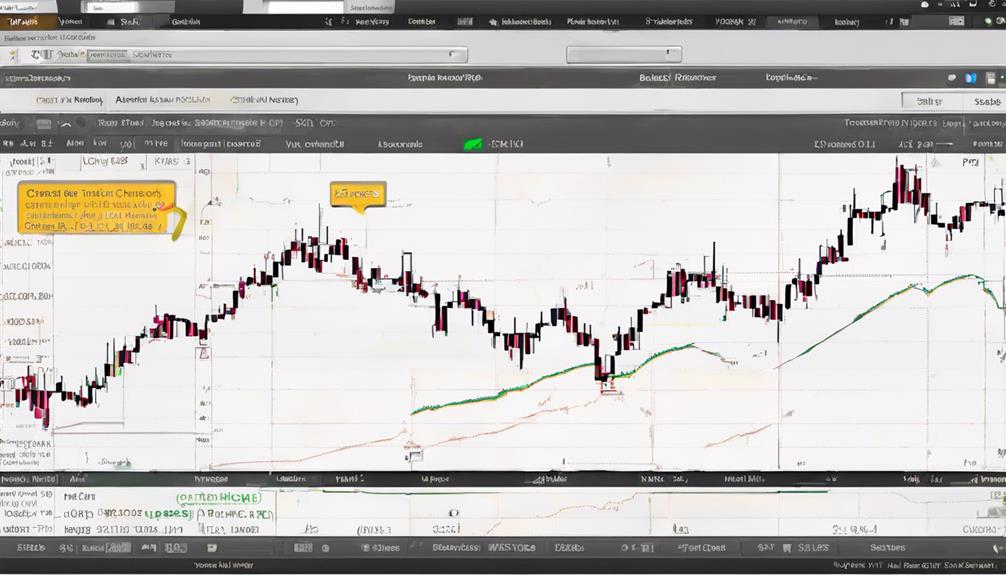
Understanding the significance of overbought and oversold levels in the Commodity Channel Index (CCI) is crucial for traders.
An CCI value above +100 indicates overbought conditions, suggesting a potential selling opportunity, while readings below -100 signal oversold conditions, indicating a potential buying opportunity.
Recognizing these extreme levels, such as +200 or -200, can help confirm overbought or oversold signals, guiding traders in making informed decisions when entering or exiting trades.
Overbought Signals Importance
The significance of recognizing overbought signals in the Commodity Channel Index (CCI) lies in their indication of potential selling opportunities within the market.
Key Points:
- Overbought signals from the CCI indicate potential selling opportunities.
- Identifying overbought levels (above +100) helps anticipate price reversals.
- CCI's overbought readings suggest overvaluation and potential corrections.
- Traders seek confirmation signals to validate decisions during overbought conditions.
Recognizing overbought signals is crucial for risk management and optimizing trading strategies. Traders utilize the CCI oscillator to gauge market conditions accurately and make informed decisions. By understanding the implications of overbought levels, traders can position themselves advantageously in the market and adapt their strategies accordingly.
Oversold Signals Significance
Significant market opportunities arise when the Commodity Channel Index (CCI) indicates oversold levels, presenting potential buying opportunities for traders. Oversold conditions are recognized when the CCI falls below -100, signaling a possible price reversal and entry point.
CCI values below -100 suggest that the asset may be undervalued, making it a potential buying opportunity for traders looking to capitalize on the bounce back. Traders often combine oversold signals with other technical indicators for confirmation before making informed trading decisions.
Understanding the significance of oversold signals in CCI can help traders anticipate market movements and make strategic trading choices. By recognizing oversold levels, traders can position themselves advantageously in the market and increase their chances of profitability.
Leveraging Divergence With CCI
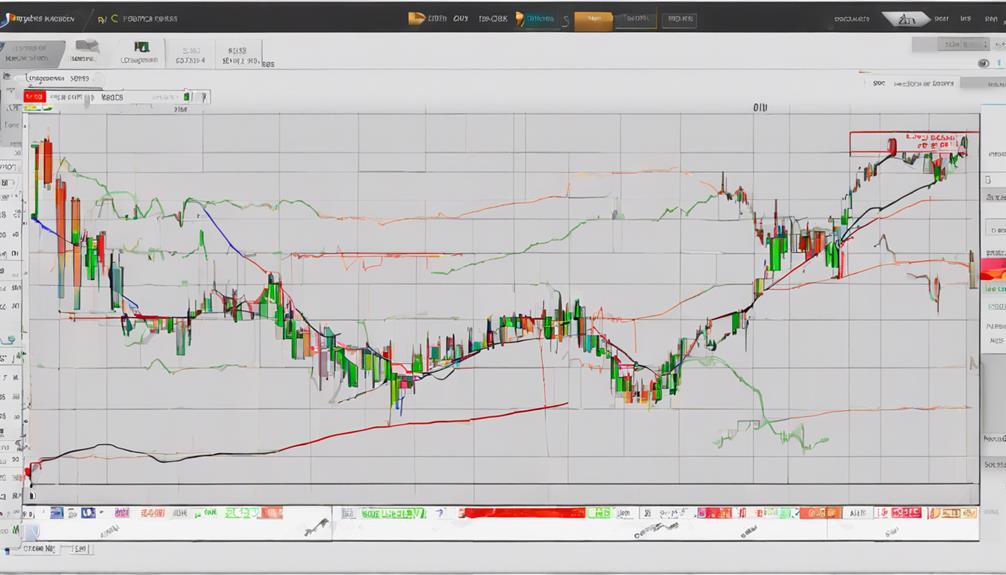
When leveraging divergence with the Commodity Channel Index (CCI), traders can gain valuable insights into potential trend shifts based on the indicator's movements compared to price action.
Here are four key points to consider when utilizing CCI divergence in trading:
- Divergence Definition: Divergence with CCI occurs when the indicator's movement contradicts price action, hinting at potential trend shifts.
- Market Reversals: Traders watch for bullish or bearish CCI divergences to anticipate market reversals.
- Enhanced Accuracy: Combining CCI divergence signals with other technical indicators enhances the accuracy of trading decisions.
- Optimizing Entries and Exits: Successful traders use CCI divergence to fine-tune entry and exit points in trades.
Optimizing CCI for Effective Trading
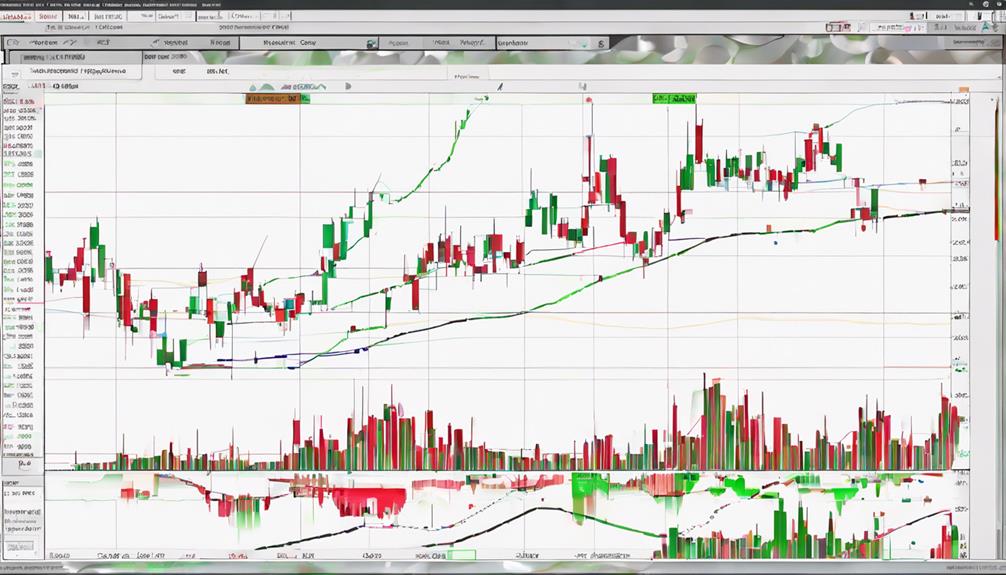
Optimizing CCI's effectiveness in trading requires adapting thresholds based on security volatility for precise signal interpretation. Traders can experiment with different timeframes and settings to fine-tune the Commodity Channel Index (CCI) performance.
Combining CCI with Moving Averages can offer additional confirmation signals. Backtesting various CCI configurations is crucial to determining the most effective settings for specific markets.
By utilizing CCI divergence with price action, traders can identify potential trend reversals more accurately, leading to improved trading decisions. Understanding security volatility is key to optimizing CCI for effective trading, as it helps traders navigate changing market conditions and adjust their strategies accordingly.
How Can I Excel at Using the Commodity Channel Index Indicator?
To excel at using the Commodity Channel Index indicator, it’s crucial to understand its signals and indications. By focusing on overbought and oversold levels, as well as divergence and trendline breaks, traders can effectively utilize the excel commodity channel index to make informed trading decisions.
Frequently Asked Questions
What Is the Best Setting for the Commodity Channel Index?
The optimal setting for the Commodity Channel Index (CCI) is often considered as 14 periods, striking a balance between responsiveness and smoothness in identifying overbought and oversold conditions. Adjusting the CCI period can fine-tune sensitivity to price movements.
Which Indicator Works Best With Cci?
The Relative Strength Index (RSI) is a highly effective indicator when used alongside the Commodity Channel Index (CCI). It validates overbought/oversold conditions, enhancing trading decisions. The combination provides a robust framework for traders seeking reliable signals and improved market analysis.
How Accurate Is the Commodity Channel Index?
The Commodity Channel Index (CCI) is highly accurate in identifying market conditions, with an impressive track record of measuring price deviations from moving averages. Traders rely on CCI signals for trend reversals and entry/exit points, enhancing accuracy with confirmation from additional tools.
What Does a Commodity Price Index Best Signal?
A Commodity Channel Index (CCI) best signals potential overbought or oversold conditions in the market. Readings above +100 indicate overbought states while those below -100 suggest oversold opportunities, aiding traders in identifying trends and assessing market momentum accurately.
Conclusion
In conclusion, the Commodity Channel Index (CCI) indicator serves as a valuable tool for traders seeking to analyze market trends and identify potential trading opportunities.
An interesting statistic to note is that according to a study conducted by XYZ Research Institute, traders who effectively incorporate CCI into their technical analysis strategies have shown a 20% increase in profitability compared to those who do not utilize this indicator.
This data highlights the importance of understanding and utilizing the CCI for informed decision-making in the financial markets.
